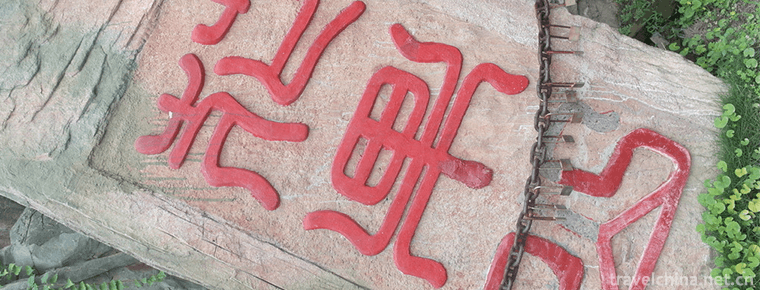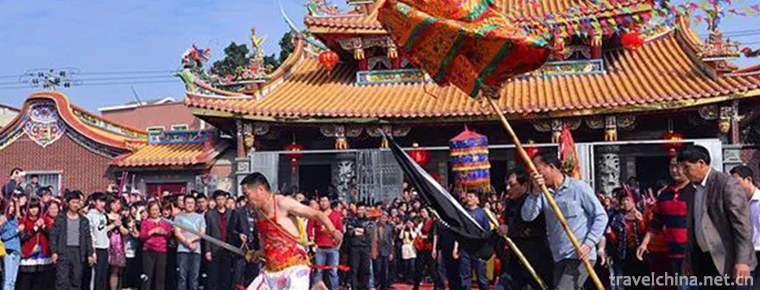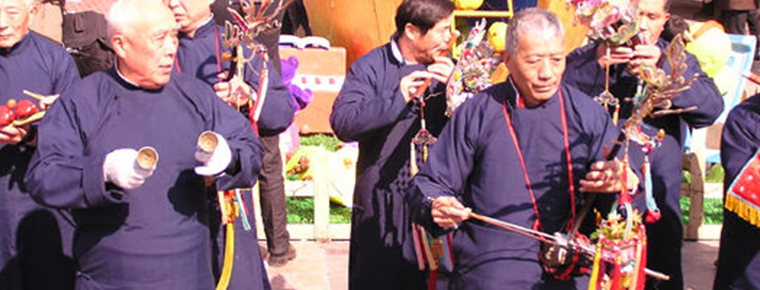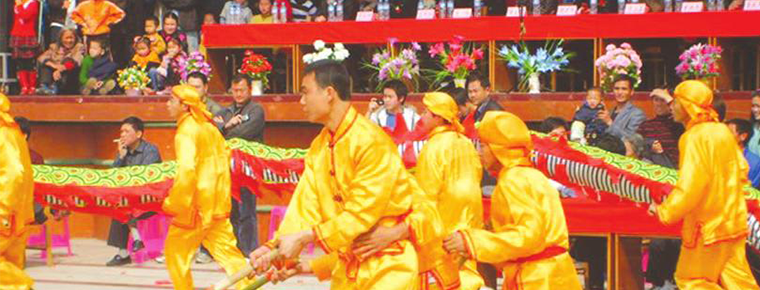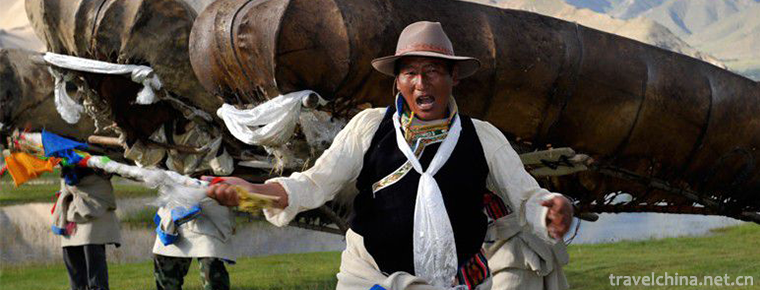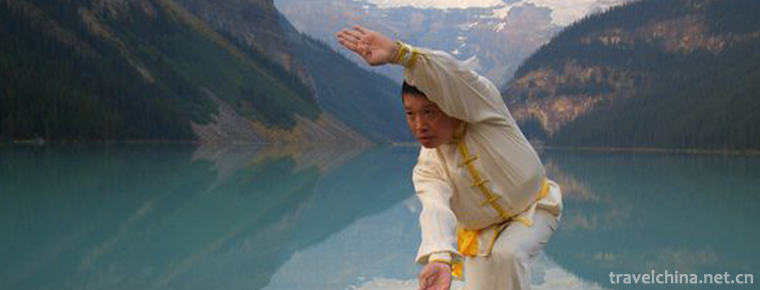Yuhang Rolling Lamp
Yuhang Rolling Lamp
Yuhang Rolling Lamp, a traditional dance in Yuhang District of Hangzhou City, Zhejiang Province, is one of the national intangible cultural heritage.
Yuhang Rolling Lamp is a kind of Han folk dance which combines athletics, martial arts and dance. It is made of bamboo pieces of large sphere as the main props, in the center of the sphere of bamboo knitting hangs a bamboo knitted ball, in which there are candles, dancing, rolling forward, flashing lights, forming a rolling lamp, so it is called "rolling lamp". Because it originated in Yuhang area on the North Bank of Qiantang River, it is also called Yuhang Rolling Lamp. Yuhang Rolling Lamp has a very long history. It is said that it originated in the Southern Song Dynasty.
On May 20, 2006, Yuhang Rolling Lamp was approved by the State Council to be included in the first batch of national intangible cultural heritage list, the heritage number: III-16.
historical origin
Yuhang Rolling Lantern is a folk dance culture with artistic charm in Zhejiang Province. It originated in the outskirts of Hangzhou and has a history of 800 years. Every Lantern Festival or temple fair, Yuhang Rolling Lantern Festival will be a special program in the welcoming ceremony team. There are many opinions about its origin among the people in Yuhang. It is said that "the theory of seeking God through flood" and "the theory of intimidating pirates" are widely spread.
After the founding of New China, with the spread of atheism and the suspension of traditional temple fairs, the rolling lights lost their living environment for a while and disappeared.
Before the Spring Festival in 1963, Zhang Changgong, a former cadre of Linping District Cultural Station, excavated and arranged folk arts such as Yuhang Rolling Lamp, which once again brought Yuhang Rolling Lamp into the people's vision.
With the advent of the Four Qing Movement and the Cultural Revolution, the newly excavated Yuhang Rolling Lantern Art has died down again.
After the reform and opening up, Wang Baolin, the stationmaster of Wengmeixiang Culture Station, excavated and reorganized the Yuhang Rolling Lamp again.
On May 20, 2006, Yuhang Rolling Lamp declared by Yuhang District of Hangzhou City, Zhejiang Province, was approved by the State Council and listed in the first batch of national intangible cultural heritage list.
Dance features
Performing Form
Yuhang Rolling Lamp has its own stringent performance characteristics. In the traditional routine, there are nine sets of 27 movements, all of which are performed by men. For performers of "Yuhang Rolling Lamp", the sequence of performances should be observed, and at the beginning of each performance, two people hold the lamp first. From the left and right directions of the stage, they appear as "Tiger Jumping Jian", and then one person performs a set of actions separately, and then they exit quickly. Later, people change the lamp and enter without changing the lamp. In turn, the next dancer performed the second set of movements, Spider Spider Spilling, and so on. The next seven dancers completed 21 movements. While dancing the "lotus blossom", the three people carrying the lantern move in the same direction according to the same sense of rhythm, while the outer circle of the main circle is formed by a group of about 30 to 40 people, and moves clockwise. The movement at the end acts as "the lotus contends for blossom". The difficulty of each set of movements is different from each other. The elements of strength and skill have different emphasis. The performances can be adjusted according to different people. In the process of dancing, besides the dancing and rotating of lights, the tiger dance and the whirlpool around the lights should also be performed. In addition, classical dances such as "shake hands", "rinse waist" and "step over" are used as auxiliary performances, and percussion instruments such as gongs and drums such as "Jet Wind" are mainly used in the use of their music, and "walking horse gongs" or "seven-character gongs" with improvisational effects are also used to set off the atmosphere.
Performing Characteristics
In the earlier "Yuhang Rolling Lamp" performance, the requirement is that the performer must be male. It may be that the performance of rolling lights needs to reflect the beauty of power and momentum of the sensory experience, or because of the weight of the rolling lights and the difficulty of performance, not men can not afford it. For example, the performer will use his body to bear the center axis and flip up and down a dozen kilograms of bamboo balls around him like a leather ball. It is like a rolling lamp with its own feet to move around the performer. It is beautiful and full of momentum. With the development of Yuhang Rolling Lamp, the theme of its performance has been extended from a single male performer to women, teenagers and martial arts students. Because the design of the rolling lamp effectively reduces the difficulty, so that women in the dance of the rolling lamp also reflects the soft and spiritual characteristics of the rolling lamp art, women's delicate beauty also makes up for the excessive rigidity of the rolling lamp. While dancing the rolling lights, the teenagers have the performance characteristics of lively sunshine, which injects vigorous vitality and vitality into the performance. Wushu students'performance of rolling lights makes the performance more difficult. Combining with the dynamic beauty of Wushu, the dancing skills and ornamentation are greatly improved. It enriches the artistic innovative dance art form of Yuhang Rolling Lantern, and makes this artistic form glow with vigorous vitality.
Clothing characteristics
In the old Rolling Lamp performances, performers wore white towels on their heads, narrow-sleeved jackets with yellow or blue edges and green or white skirts, red or blue waistbands around their waists, and black or blue lanterns, white black cloth straw shoes or black cloth shoes on their lower bodies, dressed like ancient warriors.
In the contemporary era, Yuhang Rolling Lamp is gradually moving from the countryside to the stage, and the requirements of costume are becoming more and more important. Women's version of clothing pays attention to Jiangnan characteristics, Wushu version of clothing pays attention to national style, and students'version of clothing shows local characteristics.
Looking at the various versions of clothing, it seems that we can find a common point, that is, the clothing of Yuhang Rolling Lamp mostly uses red and yellow as the basic color, in order to correspond with the true color of Rolling Lamp and "Wen Lamp" (Red Heart Rolling Lamp). In order to be beautiful, there are also some ornaments on the dress, such as a red hat in the women's version of the dress. The producer has the ingenuity to design a red ball and two windmills on the hat. When performing, the windmill on the hat will whistle and whistle continuously when there is wind, which is very attractive. When Yuhang Rolling Lantern went to Nice, France, the artists wore this costume. The windward windmill on the cap and the dancing rolling lamp reflected each other, which attracted the audience's attention and had a good artistic effect.
The Olympic version of the costume, based on the former costume, incorporates the elements of Liangzhu culture and the characteristics of the south of the Yangtze River, uses traditional buttons and embroidery patterns in the design, and adds the patterns of Jade Birds of Jinliangzhu and totems of Liangzhu culture period to highlight the charm of traditional culture. The main color blocks are red and yellow, which are well integrated with the implied meaning of "perfect, rolling forward" emphasized in the performance.
distinguishing features of music
There are many versions of Yuhang Rolling Lamp, each of which has its own music. Among them, the best version is the Olympic Rolling Lamp Music, which is quite different from other versions.
Firstly, although this piece of music only lasts a few minutes, it is the first music specially designed for Yuhang Rolling Lamp. Secondly, this piece of music is specially designed for Yuhang Rolling Lamp by Beijing Symphony Orchestra, which is completed after several modifications by experts. Secondly, this piece of music is both national and local characteristics. Get the full play, it sounds exciting, very exciting.
National characteristics
Enthusiasm, cheerfulness and excitement are the main characteristics of Chinese national music. The Olympic version of the Rolling Lamp Music makes use of the different types and specifications of musical instruments, which strengthens the national characteristics of excitement, cheerfulness and excitement. On the playing instruments, each instrument has a variety of sizes, different specifications of instruments at the same time. For example, drums are arranged in rows. There are different kinds of drums, big, medium and small. The sounds produced by different drums are different, which achieves a good musical effect and strengthens the national characteristics.
Local characteristics
Yuhang is located in the south of the Yangtze River. The folk art of Yuhang is bound to have strong local characteristics of the south of the Yangtze River and the spirit of the south of the Yangtze River. The newly created Olympic Rolling Lamp Music inherits and develops the local characteristics of Jiangnan on the basis of traditional music. The musical instruments played by Jiangnan silk and bamboo are lyric and charming, and the flavor of Jiangnan is very strong. Even in the music that reflects the masculinity of men, there is still a certain Jiangnan style. The director's understanding of the characteristics of Jiangnan made the music a success.
Level characteristics
The Olympic version of the roll-lamp music was originally arranged in three levels, according to gender and age. The Olympic version of Yuhang Rolling Lamp used to have three sets of Rolling Lamp troop, which were men, women and teenagers. The performance of these three groups of rolling lights can also be distinguished in music. The choreographer takes full account of the characteristics of the three teams, and uses three levels in the arrangement of music, with obvious hierarchical characteristics. For example, when men perform, their music is exhilarating, exciting and exciting; when young people perform, their matching music is very funny, and children's characteristics can be heard only by listening to the voice without looking at the performance; when women perform, the music is very tactful and lyrical, which fully reflects the flexibility of women in Jiangnan. Later, due to the limitation of performance time, only three minutes, the women's rolling lights team had to endure the pain and love, only retained the men and teenagers.
Inheritance and Protection
Inheritance value
As a form of folk culture, Yuhang Rolling Lamp is popular among the people and becomes a necessary entertainment for festivals and temple fairs. After several generations of folk artists and literary and artistic workers digging, sorting out, processing and improving, Yuhang Rolling Lantern gradually formed its own distinct artistic expression form and the color of the times, both the meaningful beauty of Jiangnan Dance and the vigorous and powerful folk art. "Yuhang Rolling Lantern" has its unique artistic conception and typical local characteristics. It demonstrates the outstanding creativity of Chinese folk dances and has high value for exploring ancient and modern folk dances.
Heritage figures
Wang Miaolin, male, Han nationality, born in September 1945, is the representative successor of the first batch of national intangible cultural heritage projects in Yuhang, Hangzhou, Zhejiang Province.
protective measures
In 1998, in order to popularize Yuhang Rolling Lamp in the whole region, Yuhang Cultural Bureau commissioned Yuhang Cultural Museum to hold Yuhang Rolling Lamp Training Course.
On July 7, 2006, Yuhang District Culture, Radio, Television, Press and Publication Bureau invited relevant experts and scholars to hold a symposium on the protection and utilization of Yuhang Rolling Lamp.
In November 2007, the Hangzhou Municipal Government deployed non-missing census work in the whole city. Nearly 16,000 census workers from 13 districts, counties (cities) and Xihu Scenic Area and Xiasha Development Zone relied on the "five elders" (veteran cadres, teachers, craftsmen, artists) according to the requirements of "four not leaking" (no leaking clues, no leaking types, no leaking villages and towns, no leaking artists). Artists, old land), after nearly a year of efforts, a total of 428966 non-legacy clues, investigation and registration of 30168 items.
In 2015, in order to better publicize the Yuhang Rolling Lamp and inherit the Rolling Lamp Culture, Xi'an Community opened a special exhibition hall of Yuhang Rolling Lamp Culture to show the charm of Yuhang Rolling Lamp in an all-round way.
social influence
Important activities
In 1999, Yuhang Rolling Lamp, representing Zhejiang Province, went to Beijing to participate in a large-scale literary performance celebrating the fiftieth anniversary of the founding of the People's Republic.
In 2000, Yuhang Rolling Lamp went to Beijing Television Station to perform at the Beijing Spring Festival Literature and Art Gala.
In 2001, Yuhang Rolling Lamp was performed as a pivotal program in the "East, West, North, South and Central" Festival of CCTV.
In February 2004, Yuhang Rolling Lamp went abroad to Nice Carnival in France.
On August 8, 2008, the 29th Summer Olympic Games were held in Beijing. The newly created Yuhang Rolling Lamp, representing Zhejiang Province, participated in the warm-up performance of the opening ceremony of the Olympic Games, showing the elegance of the Yuhang people in front of the people all over the world.
On June 9, 2015, the 10th Zhejiang Non-Heritage Festival and Hangzhou Exhibition of "Chinese Dream and Non-Heritage Dream" hosted by Zhejiang Cultural Department and sponsored by Hangzhou New Bureau of Culture and Guangzhou was held in the Yuhang District Stadium of Hangzhou. Among the exciting and cheerful music, more than 10 pieces of Hangzhou Roll through compilation and popularization. The performance of Yuhang Rolling Lantern with 160 participants in the lantern gymnastics team opened the curtain of the evening party;
On Dec. 10, 2015, the 2016 Zhejiang intangible cultural heritage TV Spring Festival Gala was recorded at Longshan Stadium in Anji County. The Yuhang Rolling Lantern, performed by Mulanquan Association of Yuhang District, performed brilliantly in the opening dance "Zhang Lantern Knots Colors to Celebrate the Year of the Monkey".
Cultural anecdotes
_
There was an earlier saying that the rolling lights originated from Nuo dance. In the old days, under the influence of Hangzhou Bay tides, there were always dyke breaks during typhoons or rainstorms. Therefore, the people of Yuhang decided to dance traditional Nuo dance to worship and pray for God, in order to reduce the occurrence of floods. There has always been such a saying among Chinese people that in the old days, every thing was governed by different gods. And the God in charge of water resources is regarded as Erlang God by the people. This Erlang God was actually the second son of Li Ci, a famous water control general in Shu County in Qin Dynasty. Because of his success in water control, he succeeded in sealing up the God after the event, and he had a water-avoiding God bead in his hand, which was the symbol of his water control. Thus, in the folk portraits, there appeared the scene of Erlang holding the divine beads in his hands. When people dance Nuo Dance, they will dress up as Erlang God and wear three-eyed masks. But masks are easy to handle, and divine beads are hard to find. Finally, they decided to use bamboo balls instead of divine beads. Over time, "Erlang God Dance Rolling Lamp" became the main program when people prayed for God. This kind of dance is also considered as the embryonic form of Yuhang Rolling Lamp.
The theory of intimidating Pirates
As for the origin of rolling lights, there is another saying that rolling lights are created to intimidate pirates. In ancient China, Yuhang area was mostly saline-alkali land, so it quickly became a prosperous place. However, the prosperity of the economy has also buried a crisis in this area. At that time, pirates appeared frequently along the coast, and they regarded the prosperous land as a piece of fat. Because of the frequent visits of pirates, the local people suffered the disaster of extinction. The people decided to fight the pirates to the end when they changed places and were reluctant to leave the land. At that time, an idea came into being for a competitive project. He knitted bamboo lanterns into bamboo lanterns, lit candles inside, and named them "Rolling Lamp". From a distance, it looks like a martial arts master using internal force to operate. This not only intimidated the pirates, but also achieved the goal of physical fitness. Later, pirates dared not come, and the custom of dancing the rolling lights became popular in the area.

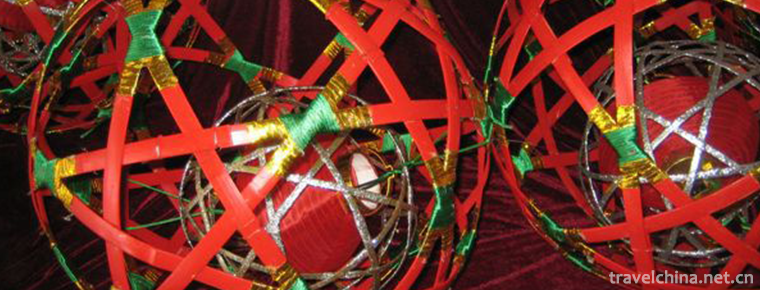
-
MountHuaguoshan
Mount Huaguoshan (Lianyungang Huaguoshan Scenic Area) is located at the middle foot of Nanyuntai Mountain in Lianyungang City..
Views: 283 Time 2018-12-06 -
The Religion and Customs of Baosheng Emperor
Baosheng Emperor, also known as Wu Zhenren, was born on March 15, 1979, in Baijiao Village, Tong'an County. Since his childhood father died of illness.
Views: 200 Time 2019-04-04 -
Jiangnan bamboo
Chinese traditional instrumental music, silk and bamboo, is popular in southern Jiangsu and Zhejiang. After the Revolution of 1911, great progress was made in Shanghai.
Views: 113 Time 2019-05-05 -
Lion Lamp in Jinggangshan Hall
"Quantang Lion Lantern" is a traditional Wushu athletic project spread in Huzhaoping Village, Shangxiang, Jinggang, Shandong Province. It has nearly 200 years history. .
Views: 153 Time 2019-05-08 -
Kuozi Guzi
Guzi, also known as "Guzi Dance" and "Cowskin Boat Dance", is a unique folk dance of two groups of Junba in Chabalang Village, Qushui County, Tibet Autonomous Region. In 2008.
Views: 125 Time 2019-05-10 -
Sun Bin quan
Sun Bin Quan is an ancient and rare traditional boxing in Shandong Province. Its connotation is broad and profound, which was created by Sun Bin, a military strategist in the Spring and Autumn Period .
Views: 163 Time 2019-06-17 -
Technical requirements of Chinese embroidery
The technical requirements of embroidery are: smooth, even, flat, even and clean. Smooth refers to straight straight straight line and smooth curve; neat refers to neat pointer trace and no uneven edge; flat refers to accurate gesture, plain.
Views: 322 Time 2020-12-12 -
Warm tips for Chengdu Giant Panda Base
Giant pandas live in dense bamboo forests at an altitude of 2600-3500 meters. The annual temperature is lower than 20 ℃ and likes cold and afraid of heat. When the weather is cool, the giant panda will carry out activities in the outdoor playground. When the outdoor.
Views: 173 Time 2020-12-13 -
Soil characteristics of Suining
The strata in Suining City are mainly limestone in the lower part and purplish red sandy soil and mudstone in the upper part. Therefore, Suining area is also known as "red soil land"..
Views: 297 Time 2020-12-16 -
Administrative division of Nanchong
Nanchong City governs nine county-level administrative divisions (Municipal District 3, county-level city 1, county-level 5), and 241 township level administrative divisions (street 42, town 161, township 38). It covers an area of 12514 square kilometers and has a population .
Views: 316 Time 2020-12-17 -
Nanchong mineral resources
Nanchong mainly has rock salt, oil and natural gas, placer gold, ferrotitanium, uranium, phosphorus and other mineral resources. Nanchong is located in the core of Nanchong rock basin, the largest rock salt sedimentary basin in Sichuan Province. Underground.
Views: 337 Time 2020-12-17 -
Animal resources in Guangan
There are 14 families, 30 species of mammals, 11 orders, 36 families, 115 species of birds, 19 species of reptiles and 10 species of frogs in Guang'an City. The national first-class protected birds include the Tragopan, which is mainly distributed in the forest area of H.
Views: 141 Time 2020-12-19
